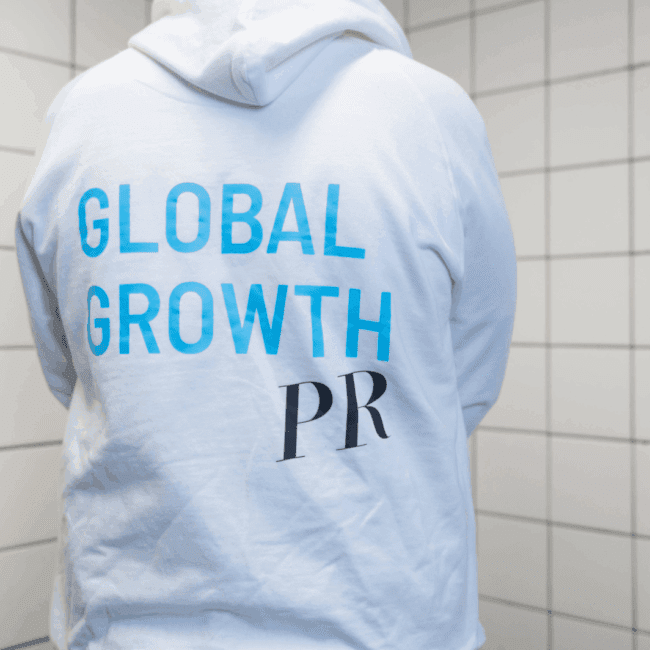A press release is a document that shares details about an important event with journalists and the wider media. Although it is considered quite a formal tool in your marketing set-up, press releases offer essential information to reporters, who then use them as a foundation for their stories.
When executed effectively, press releases are a crucial element of your communication strategy. A well-written press release can help you gain widespread media coverage, skyrocket your brand awareness, and establish your business as an authority in your industry – hooray! TechCrunch, Sifted, Business Insider, and Forbes picked up this press release about a humble €1.8M seed round. Not bad, eh?
If done wrong, you won’t get any press coverage, you could potentially harm your ongoing relationships with journalists, and you may even end up as a #PRFail on a journalist’s X timeline.
Three years ago, we wrote about why nobody cares about your press release – and everything on that list is still valid today. Three years later, the press release definitely is still the right tool for the job, but many people and companies keep making the same mistakes.
But instead of telling you what not to do, we’re here to tell you how to write a press release that the media will love – and we’re even going to give you the exact same template we use every day to generate earned media coverage for our portfolio of over 400 Nordic companies.
1. Start with a strong, simple, and short headline
What made Carbonaide’s funding press release cause a media frenzy? Well, a significant element was that the idea was so simple and easy to understand from the headline.
Your press release’s headline is the first thing that the media and readers will see. So, make sure it’s attention-grabbing and concise. It should give a clear idea of what your press release is about and why it’s relevant.
Some people write the headline last – others prefer to start with it because it helps them to focus on the angle of the whole press release. Either method is fine, but always revisit the headline at the end to make sure it’s as powerful and punchy as possible.
However, avoid words like “unique,” “leading,” “first-of-its-kind,” and other marketing jargon. It is heavily frowned upon in PR and journalists see right through it.
2. Write a captivating subheader that expands on the news from the headline
The goal of a subheader is to make people keep reading. So, unpack the headline with your subheader (often mistranslated as the “ingress”) and explain why people should care about your news. If your company uses novel and interesting technology to achieve a certain impact, explain it! The media love it when complex information is explained in simple terms that deliver impact and value. Keep it simple. if you can’t think of anything that adds value, just leave it out.
3. Don’t bury the news
After the subheader, the lead paragraph is the next crucial element of your press release. It should summarize the most important information in your press release. We call this the BLUF (Bottom Line Up Front) method. The news should be clearly presented and tell who was involved and did what – and don’t forget to add backlinks to the companies involved to help the press learn more.
Returning to the humble €1.8M press release, you can see how everything related to the funding news was tightly compacted at the top – it says who raised what, from whom, and what the money will be used for.
After the lead paragraph(s), you can spend a bit of time storytelling and providing the context about the problem this company is trying to solve, or why this announcement is important to its market, industry, and your consumers. Then you can explain what your company does to solve this problem and how it differs from your competitors (AND NAME THEM – it’s one of the first questions a journalist will ask, so just say who they are upfront – be bold!)
4. Use quotes to add depth and personality
Press releases have a bad reputation for being dry and boring. And yes, while press releases do have a certain style (which is great for giving journalists a clear distillation of the facts), it doesn’t mean they have to be bland.
Your storytelling should spark emotions and imagination in your audience – but you only have a few sentences to play with (otherwise, your press release will be too long). This is where quotes come in – they allow you to expand on your news in different ways and talk more naturally.
Include quotes from your company’s executives, customers, or investors to add credibility and personality to your press release. It can also give the media a distinctive perspective on your story. A press release that’s missing quotes, especially third-party quotes for a partnership or funding announcement, is very suspicious and will raise a lot of questions from journalists. Just remember that collecting quotes and getting approvals can take a long time.
5. Provide data and stats from relevant sources
Journalists love data – there’s nothing more credible than a story with data behind it to back it up. If your company is making a big claim and has the data to prove it, that’s a surefire way to turn some heads into headlines!
One basic thing journalists need to know is the size of the market you’re addressing – it helps give them context. Turn to Statista or other sources to prove your point.
All companies have internal data – you just don’t know it yet. For example, it could be anonymous master data that shows a trend of your users, such as 52% of hair salon bookings through your salon platform happening outside of opening hours.
A great way to wrap up the body text of a press release is to include facts about your company, such as how much money you’ve raised in total to date, the size of your company, the offices you have around the world, and the customers and partners that you work with. Tie it all together with your future goals and you’ll have a press release ready to make headlines in the earned media!
6. Don’t forget your media kit, boilerplate, and press contacts
Every good press release needs a bank of assets and materials to go along with it. A media kit is a resource pool for journalists to access when talking about you. It provides essential content for enriching the stories they are able to tell. We always recommend a minimum of diverse team pictures, founder pictures, product pictures, and logos (.png format). These can be hosted in a public Drive or Dropbox folder and linked to the bottom of your press release.
A boilerplate is an essential tool for press releases to quickly communicate your organization’s facts. It normally goes at the bottom of the release and is a short (3-5 sentences max.) summary of your value proposition, mission, key credibility points, and company information. It can be appended to emails, press releases, and any official correspondence.
Finally, provide a contact person for the media should they have any further questions or would like to do an interview.
Time to get started!
Download our free beginner’s guide to international PR, with free templates, tips, and more!
By following these tips on how to write a press release, and by using our free beginners guide to international PR, you will get a free press release template that will help you grab media attention and help you achieve your international PR goals. So, go ahead and start writing press releases that the media will love!



